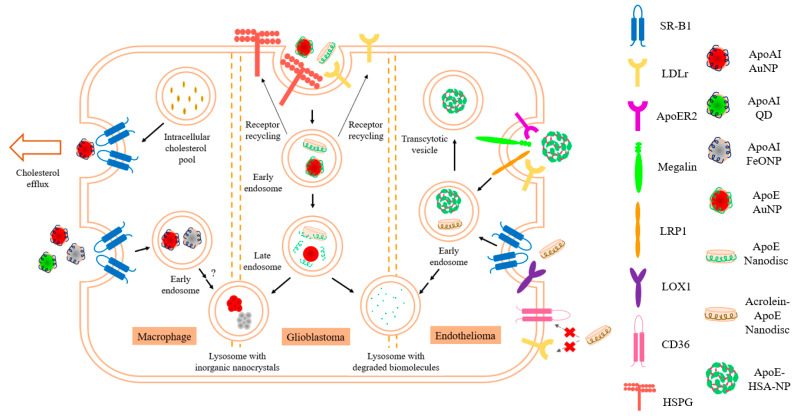Figure 3.
Entry mechanism(s) for various types of nanoparticles (NPs) in cells. HDL reconstituted with apoAI and various types of inorganic nanocrystals are taken up by macrophages, a process that is mediated by SR-B1. HDL-AuNP have been shown to promote cholesterol efflux not only in THP-1 macrophages, but also in other cells that express SR-B1 such as B lymphoma cells and myeloid derived suppressor cells (MDSCs). HDL reconstituted with apoE3, either as discoidal or spherical NPs, could gain entry through the LDLr family of proteins in GBM and possibly also through heparan sulfate proteoglycans (HSPG). In endothelial cells, rHDL reconstituted with acrolein-modified apoE showed entry through both SR-B1 and LOX1, but not through conventional oxidized LDL receptors such as CD36. Interestingly, HSA-crosslinked-apoE3 NP without lipid content were shown to enter brain endothelial cells mainly through LRP-1, although other LDLr family receptors could also contribute to the entry.

